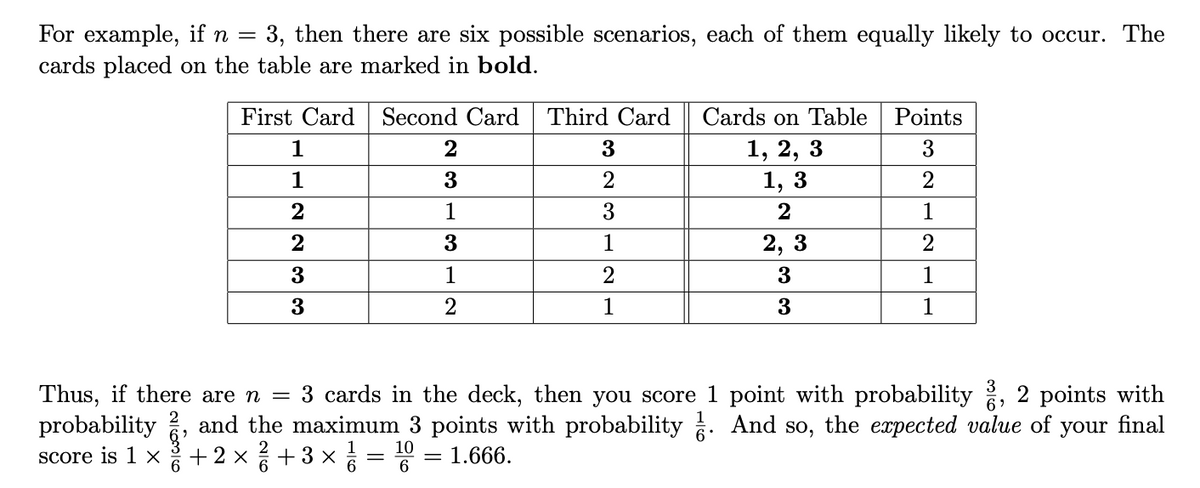You are given a deck of n cards, which are numbered 1 through n. After the n cards are randomly shuffled, the cards are dealt face up on the table, one card at a time. Card rule: after the first card is placed on the table, each new card must have a higher number than the previous card. If it does, this new card remains on the table. If the new card is lower in value, then this card is removed from the table and the game is immediately over. ***The image is the example*** Questions:
You are given a deck of n cards, which are numbered 1 through n. After the n cards are randomly shuffled, the cards are dealt face up on the table, one card at a time. Card rule: after the first card is placed on the table, each new card must have a higher number than the previous card. If it does, this new card remains on the table. If the new card is lower in value, then this card is removed from the table and the game is immediately over. ***The image is the example*** Questions:
Chapter8: Sequences, Series,and Probability
Section8.7: Probability
Problem 6ECP: In Pennsylvania’s Cash 5 game, a player chooses five different numbers from 1 to 43. If these five...
Related questions
Question
You are given a deck of n cards, which are numbered 1 through n. After the n cards are randomly shuffled, the cards are dealt face up on the table, one card at a time.
Card rule: after the first card is placed on the table, each new card must have a higher number than the previous card. If it does, this new card remains on the table. If the new card is lower in value, then this card is removed from the table and the game is immediately over.
***The image is the example***
Questions:
-
Prove that for all positive integers n ≥ 3, if there are n cards in the deck, you score exactly 1 point with probability 12 and exactly 2 points with probability 13.

Transcribed Image Text:For example, if n = 3, then there are six possible scenarios, each of them equally likely to occur. The
cards placed on the table are marked in bold.
First Card
Second Card Third Card
Cards on Table Points
1, 2, 3
1, 3
1
3
1
2
1
3
2
1
2
1
2, 3
2
3
1
3
1
3
3
1
Thus, if there are n =
probability
3 cards in the deck, then you score 1 point with probability , 2 points w
final
and the maximum 3 points with probability . And so, the expected value of
your
Score is 1 X
+2 x+3 x =
10
||
1.666.
Expert Solution
This question has been solved!
Explore an expertly crafted, step-by-step solution for a thorough understanding of key concepts.
This is a popular solution!
Trending now
This is a popular solution!
Step by step
Solved in 2 steps

Knowledge Booster
Learn more about
Need a deep-dive on the concept behind this application? Look no further. Learn more about this topic, probability and related others by exploring similar questions and additional content below.Recommended textbooks for you

